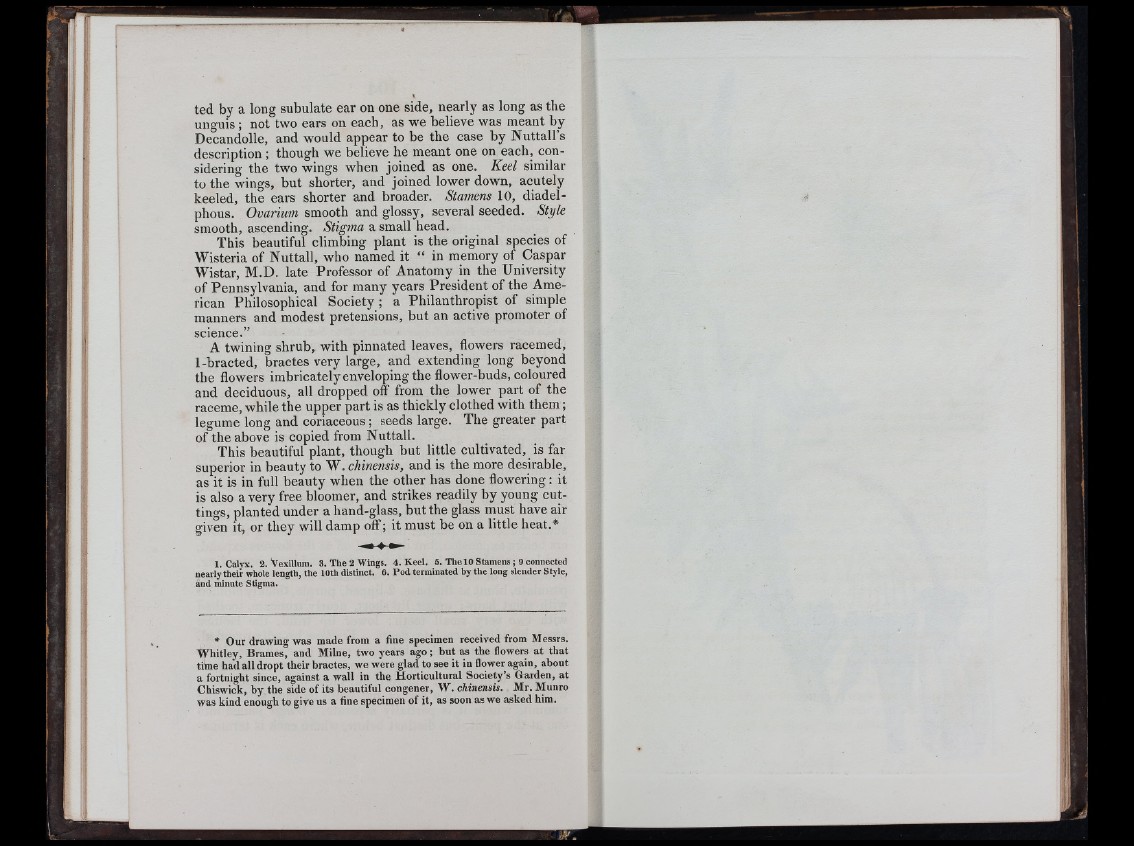
ted by a long subulate ear on one side, nearly as long as the
unguis ; not two ears on each, as we believe was meant by
Decandolle, and would appear to be the case by Nuttall’s
description ; though we believe he meant one on each, considering
the two wings when joined as one. Keel similar
to the wings, but shorter, and joined lower down, acutely
keeled, the ears shorter and broader. Stamens 10, diadel-
phous. Ovarium smooth and glossy, several seeded. Style
smooth, ascending. Stigma a small head.
This beautiful climbing plant is the original species of
Wisteria of Nuttall, who named it “ in memory of Caspar
Wistar, M.D. late Professor of Anatomy in the University
of Pennsylvania, and for many years President of the American
Philosophical Society; a Philanthropist of simple
manners and modest pretensions, but an active promoter of
science.”
A twining shrub, with pinnated leaves, flowers racemed,
1-bracted, bractes very large, and extending long beyond
the flowers imbricatelyenveloping the flower-buds, coloured
and deciduous, all dropped off from the lower part of the
raceme, while the upper part is as thickly clothed with them;
legume long and coriaceous; seeds large. The greater part
of the above is copied from Nuttall.
This beautiful plant, though but little cultivated, is far
superior in beauty to W. chinensis, and is the more desirable,
as it is in full beauty when the other has done flowering: it
is also a very free bloomer, and strikes readily by young cuttings,
planted under a hand-glass, but the glass niust have air
given it, or they will damp off; it must be on a little heat.*
1. Calyx. 2. Vex illum . 3 . Th e 2 Wings. 4 . K e e l. 5. Th e 10 S tam en s ; 9 connected
nearly their whole length, th e 10th distinct. C. P o d terminated by the long slend er S ty le ,
and minute Stigma.
* Our drawing was made from a fine specimen received from Messrs.
Whitley, Brames, and Milne, two years a g o ; but as the flowers at that
tiine had all dropt their bractes, we were glad to see it in flower again, about
a fortnight since, against a wall in the Horticultural Society’s Garden, at
Chiswick, by the side of its beautiful congener, W . chinensis. Mr. Munro
was kind enough to give us a fine specimen of it, as soon as we asked him.